Band Of Holy Joy - Interview
by John Clarkson
published: 4 / 7 / 2012

intro
John Clarkson speaks to Johny Brown from London-based alternative rock band the Band of Holy Joy about his group's two new albums, 'How to Kill a Butterfly' and 'The North is Another Land'; writing plays and his group's new radio show
“Reading was an obsession for me when I was a kid,” says Johny Brown. “I broke both my legs when I was five or six years old. I had only been in primary school for three or four weeks, and I did the splits in the toilets one day, and a group of boys walked over the top of my legs and I was off school for the next year. My sister taught us to read, so from the age of six I could read. I loved books. I went back to school when I was seven, and nobody else could read. I still love my books now.” Thirty years on since he moved as a 20 year old from his native North Shields to London, Johny Brown has lost none of his soft Tyneside accent. He is speaking to Pennyblackmusic about his remarkable group the Band of Holy Joy’s twelfth and thirteenth albums, ‘How to Kill a Butterfly’ and ‘The North is Another Land’, both of which have been released in rapid fire succession and within six months of each other. “Novels in this age of trash media are really special,” he continues. “I buy loads of old French books in particular, lots of old paperbacks. It is still really precious to me.” Brown’s love of books is not surprising. The Band of Holy Joy, which first formed in 1984 and in which Brown is both the sole surviving original member and also the group’s front man, have always come across as especially literate, his lyrics as much short stories and poems as conventional rock songs. Neither ‘How to Kill a Butterfly’ or ‘The North is Another Land’ are any exceptions. The latter was spawned out of a six part radio play, which Brown, who is also a playwright, wrote for the radio station, Resonance. The songs on ‘How to Kill a Butterfly’ include ‘The Observer’s Book of Bird Eggs’, which tells of a seven year old boy’s first obsession with bird egg collecting, and ‘A Clear Night, A Shooting Star, A Song for Boo’, in which its Luddite narrator imagines shutting off a set of electrical appliances one after another so that he can hear real silence. On ‘The North is Another Land’, a fallen Hollywood actress on ‘On the Ground Where John Wesley Walked’ travels across Cumbria, which has been laid to waste by Mad Cow Disease. The protagonist of ‘Ours is a Life’, another of the songs on that album, has just lost his wife who he has known since childhood, and revisits some of their old and now often destitute haunts. The band’s lyrics are, however, only one part of what makes them unusual. They broke up in 1993, reformed in 2002 and since their reformation have employed their own director of “visuals” Inga Tillere, who is also Brown’s Latvia-born girlfriend. She has directed films for many of their songs, which are also used to accompany them during their live performances, and provided art work for all their recent releases. The CD version of ‘How to Kill a Butterfly’, which has been released on the London-based label Exotic Pylon, comes in a cloth-bound book, which features an essay from Brown on killing and preserving butterflies, and in its centre pages has a haunting set of old photos of Tillere’s Latvian relatives. ‘The North is Another Land’, which has come out on the German label Moloko Plus, appears in a wallet, which alongside the CD, has a set of postcards, one for each of the different tracks on the album which has several instrumentals as well as songs. The Band of Holy Joy has since it return hosted a succession of radio programmes, and the latest of these, ‘Not Such a Nice Radio Show’, has been on air since May and is transmitted on Friday nights at 10.30 p.m. on Resonance FM. Over fifty members have now passed through the Band of Holy Joy’s ranks, including at one point Robert Hacker, who now fronts recent Pennyblackmusic Bands’ Night headliners Morton Valence. As well as Brown on vocals and Tillere on found sounds and visuals, it has for the last five years also consisted of Chris Brierley (violins), Andy Astle (guitar, banjo and mandolin), James Stephen Finn (piano, synthesizers, accordion and bass) and William J. Lewington (drums). The group’s music is impossible to push into a category, and, spread-eagling itself across several genres, includes elements of brooding post-punk, raucous folk rock, European cabaret, reflective isntrumentation and epic pop. In conversation, Johny Brown spoke about his extraordinary group. PB: The Band of Holy Joy has had a fluctuating line-up and an almost Fall-like membership. This line-up of the group has, however, been the most stable ever. Why do you think this line-up has achieved such longevity in contrast to many of the other line-ups of the band? JB: I think it is down to age mainly. In the past and when we younger, it was always quite volatile and people were there for lots of different reasons. Now everyone in the band gets on really well, and we are there for the music more than often anything else. PB: The majority of the band’s songs are centred around your vocals. How are the band’s songs written? Do you write the vocals and then the band works their music around them, or is it the other way round? JB: We work both ways. Sometimes the guys will come in with a tune or a chord sequence, and I will put lyrics to it and then we will work from there. Sometimes I will come in with some lyrics, or some lyrics and chords, but mainly I write around the band’s music. PB: What about Inga’s visuals? Does she create them around the band’s music as well or again is it the other way round? JB: Mainly she creates them around the band’s music, but I also work with Inga a lot on my own, and she will have various images and bits of visuals and I will write to her images now and then. Usually though it is from source. We will have a finished piece of music, and Inga will work it from that. PB: Until recently you had two internet Band of Holy Joy radio shows, your own Sunday night show ‘Radio Joy’ which you would stream from your website, and a Friday night show’ Mining for Gold’ which came out on Resonance. Was there a significant difference between’ Radio Joy’ and ‘Mining for Gold’? JB: ‘Radio Joy’ was more soundscape-based and really just about the Band of Holy Joy. It was really us just having fun and making our own sounds. ‘Mining for Gold’ had a lot more guests on. We would find all sorts of rare and forgotten songs and get guests on that weren’t being heard anywhere else. We felt that both had had their day. We put five years into Radio Joy, and it got too much. It was taking up every Sunday night, and Inga, who is the technical wizard in the band and did most of the work, got sick of it in particular. We have now got a new radio show, ‘Not Such a Nice Radio Show’, which goes out live from Studio 2 every Friday night on www.resonancefm.com, and has been running since May. PB: Is ‘Not Such a Nice Radio Show’ an amalgamation of the best bits of ‘Radio Joy’ and ‘Mining for Gold’ or does it work a different way? JB: It works in a different way! It is more like ‘Radio Joy’. We have a blast every Friday night, and go in there with soundscapes and beats and put loads of found sounds over the top of them, and take text from magazines like ‘Heat’ and ‘Now’ and process them as well. We make a really good Friday night noise basically. PB: As well as all the work you have done in radio and visuals, you have also written plays and poems and sometimes merged them together with the Band of Holy Joy’s music. Your 2009 album, ‘Paramour’, came out of a play ‘Troubled Sleep’, and ‘The North is Another Land’ out of a six part radio play. Do you see much difference between all these other mediums or do you see them as all coming from the same point? JB: They all come from the same point. I have been doing the Band of Holy Joy for thirty years now, but when Holy Joy had a hiatus about ten or fifteen years ago I started writing plays. I wrote four or five plays that got as far as the stage. I was quite a serious playwright for a while, and then when Holy Joy got back together we started amalgamating them together. I have also done ten years now of producing radio shows and getting them on air. That is how long ago we started with ‘Mining For Gold’. To me it is all sound, all noise, all text. It is all different ways of getting the message across. PB: ‘Troubled Sleep’ was a fictional account of Sid and Nancy’s last days in the Chelsea Hotel. The group went to New York and the USA for the first time in 2008. Was that trip to New York the initial inspiration for it? JB: Definitely. The whole play is about New York. I think Sid and Nancy’s role in it is a bit of a red herring really. It developed that way, but it was mainly about New York, and all the fear and suspicion and paranoia that can be found there. I do love putting mythical characters into plays, and sort of twisting them. I did a play at the Citizens Theatre in Glasgow a few years ago with the Scottish actor Tam Dean Burn. I always think it is a bit wanky when other people say this about other people, but in my eyes Tam is a Scottish national treasure. The play we did was called ‘William Burroughs Caught in Possession of the Rime of The Ancient Mariner’. In it we had William Burroughs, who was played by Tam, along with Kathy Acker, Johnny Thunders and Jean-Michel Basquiat, stealing ‘The Rime of the Ancient Mariner’, ST Coleridge’s poem, and setting out on an imaginary journey, which mirrors the journey which the Ancient Mariner made in the original poem, out of New York . PB: The essay that appears on ‘How to Kill a Butterfly’ draws comparisons with killing and encasing a butterfly to recording an album. It seems to imply that both are frustrating procedures in which one bad move can destroy everything, but it can also be highly rewarding when you get it right. Is that your take on it? JB: I think so definitely. There are musicians in the band who are really brilliant and accomplished and competent, but there is another side to the band in which the musicians aren’t so good. I am not a very good musician. For me there is always a chance element, and it is always a gamble of whether I will get things right or not. When you are putting your money into recording, it is a venture as well as an adventure and I love that. I like taking risks, and I like the risk element of it. PB: It has been said that the message of ‘How to Kill a Butterfly’ is “to wake up, take a breath and appreciate life for all it is worth.” Do you see that as its main theme? JB: I think so. Yeah. Life is precious. Life is rare and scarce at the moment. PB: The photos in the centre of the book were apparently taken by Inga’s father. Where were they originally taken? JB: They were taken in Latvia, in a town called Ogre, which was is an industrial town about thirty miles outside Riga. It is possibly the world’s most beautiful place, and set on the banks of the River Daugava. Inga’s father was called Janus Tillers. He sadly died of cancer two years ago, and was a great man, I used to converse in German with him. He always had a beer waiting for me when I arrived at their apartment. He would have liked to have been a professional photographer I think, but the times, and the state, dictated otherwise. He was an engineer instead. I have a feeling his desire lives on through Inga. The people in the photos are Inga’s family. They were all taken thirty or forty years ago when Latvia was under Russian rule. You can see that there is a lot of dignity going on there. There is a real sense of human resilience and spirit in those photos, which we thought captured a lot of the flavour of the album. PB: On the subject of human spirit, The Observer’s Book of Bird Eggs’ captures the joy of a seven year old discovering his first passion in life, which is collecting birds’ eggs. Was that entirely autobiographical? JB: Yeah, I was slightly older, but that was me. I collected birds’ eggs from the age of eight. I knew all the different birds’ eggs really well. It’s a weird thing when you are a child. Your morality is different. When you get to eleven or twelve, you realise that it is a little bit cruel and odd to be doing something like that, but when you’re nine or ten you get addicted to things like that. It is a song about addiction really. We all become addicted and obsessed by things, and from the earliest age. PB: The main character in ‘The Repentant’ is a down-and-out. Towards the end of that song, he goes into a long soliloquy about ecology and saving the planet, and says that it of little concern to him, and “what matters to me, surely, is each other,” Is that also your own personal take on things. Are you saying that if we can’t look after each other first of all then there is no point in looking after anything else? JB: Exactly. I feel exactly what that character does. The character in that song is an abused and vulnerable character prone to self-harm and without much of a stake in society, or voice even. He is sitting on park bench seeing through the shit fabric curtain we call society, and realising that the planet is eternal and will roll on and that humans are a mere blink and you will miss them whim in its history, and that all the grandiose words of others don't matter a toss if we can't do the one thing right, which is love each other with respect on a one to one level. PB The last track, ‘A Clear Night, A Shooting Star, A Song for Boo’, has a wonderful passage in it in which you start off listing all the electrical appliances that you want to turn off. You start off with computers, and by the end you have moved onto airports and refineries and the main grid. There is a line about the “beauty of silence” and then at the end of the song you hear a mobile phone going off in the distance. Were you saying there that however hard you try, and however much you dream of it, that things have gone too far for that and you can’t really escape technology? JB: We can’t. Those lines came out of the River Daugava in Latvia which I was talking about. I was lying there at midnight in the river, and it was totally silent, and when I got back I immediately started writing and those lines just came out. It is like a prayer of solace, Wow, if we could reject all this and go back to nature. It is idealistic in the extreme, isn’t it? PB: ‘How to Kill a Butterfly’ and The North is Another Land’ have been released in very quick succession from each other. How far apart were they recorded? JB: A lot of ‘The North is Another Land’ was recorded before we did ‘Butterfly’. We did all the instrumentals and some of the songs afterwards, but ‘On the Ground Where John Wesley Walked’, ‘The Black Middens’ and ‘Meet Me on the Corner’ were recorded just before ‘Butterfly’. I had them knocking about and I didn’t want to waste them, and this German label, Moloko Plus, said that they would like to put something out, so it came together as a result of that. PB: The North seems to have an almost mystical status on ‘The North is Another Land’. What does the North seem to symbolise to you? JB: Integrity, vision, spirituality. I've lived in London for thirty years now, so my perspective is very much one of an exile, but I've still got a total love for the place, the people, the dialect, and what I have been trying to express or convey in the songs on the album, is something I always experience, which is the feeling, the pure feeling, you get when you walk upon the land up there, and the spirit, which is really palpable. For me the North Shields where I grew up is unrecognisable in a lot of ways now. So many old buildings and streets have been erased, and there are so many new buildings, but there is still this spirit, language, feeling which is so apparent and remains, and is really strong and timeless, character I guess you'd call it. PB: ‘The North is Another Land’ comes from a six part radio play. What is that play about? Is it true that it is about a disgraced Hollywood actress returning to her roots? JB: Yes, an American actress comes over here and makes a trip up North. It is about her rediscovering the North compared to thirty, forty years ago when she was last here. She goes to Appleby Horse Fair. She goes to Windscale and the nuclear power plant there, and goes to Gateshead and Newcastle where she encounters anti-Muslim racism. Through that we explored the North, and what that means for an outsider to be up North. PB: ‘The North is Another Land’ also seems to be about the devastating effect of nature and time. ‘On the Ground Where John Wesley Walked’ was inspired by visiting the countryside after the Mad Cow crisis, and on ‘Ours is a Life’ is about death. Do you see that as being its other main theme? JB: Absolutely. It is about the things that you can’t control or that are beyond you. Time seems to move so fast these days. It is about not being able to hold on things and things slipping your grasp. I am fifty now and people my age are dying all around us, and our parents are growing really old. It is about human frailty.. PB: ‘Meet Me On the Corner’ is an old Lindisfarne song from 1971. They also came from the North East, Why did you decide to put that on ‘The North is Another Land’? Was it because it was a song from your youth? JB: Absolutely, it is just a homage really. I was a punk when I was a lad and I used to absolutely spit on them. My sister liked them. She was older than me and I just thought they were hippies, and then ten years later I realised just how brilliant they were. I loved the song. I wanted to take it a little bit further than we did. I wanted to really slow it down and take it out there and make it almost industrial. I think we failed, but I still like our version. PB: Final question. What are your plans from here? What are you doing next? JB: We are banging out another album out straightaway on cassette. It is going to be called ‘City of Tales: Volume One and Volume Two’. The guy who I formed the original band with, Brett Turnbull, has found this tape, this cassette that we were going to release 28 years ago, but never did, so we are going to release both in a double cassette in a limited edition of 100, with those songs on the first tape, and a set of new songs on the second tape. All the songs on it are about London. I am really excited about it. PB: Thank you.
Band Links:-
http://www.bandofholyjoy.co.uk/https://www.facebook.com/bandofholyjoy/
https://twitter.com/BandOfHolyJoy
https://bandofholyjoy.bandcamp.com/
Picture Gallery:-
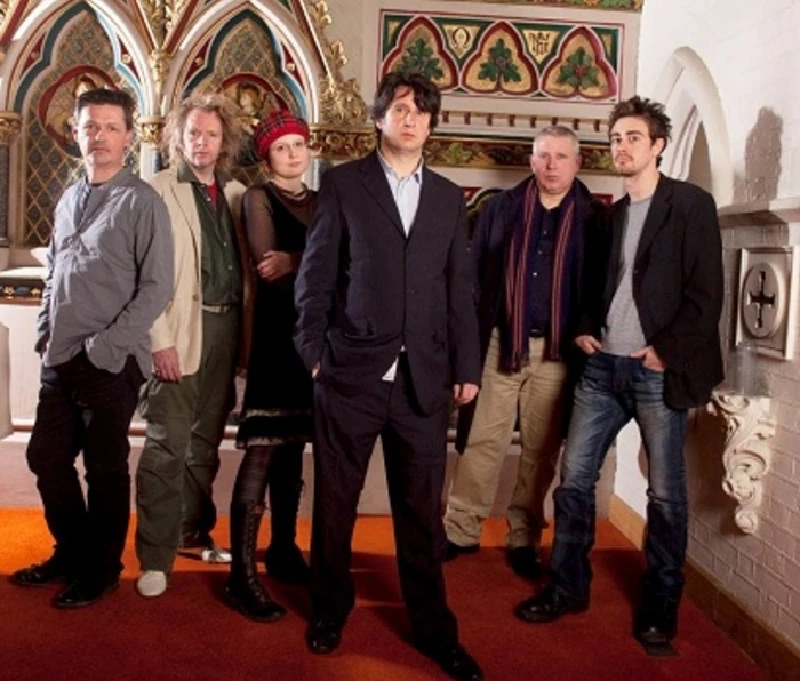
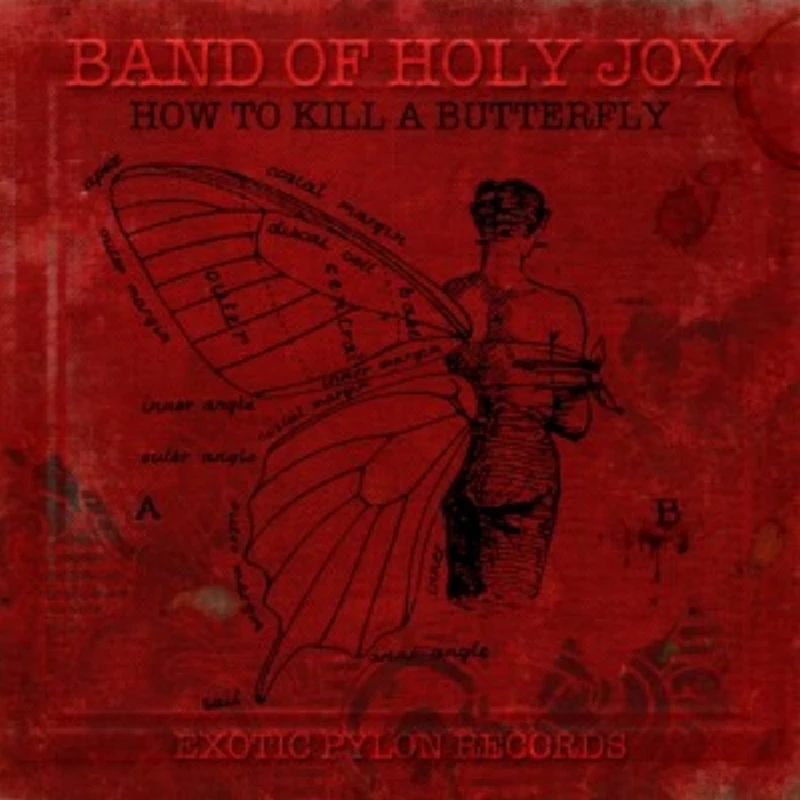
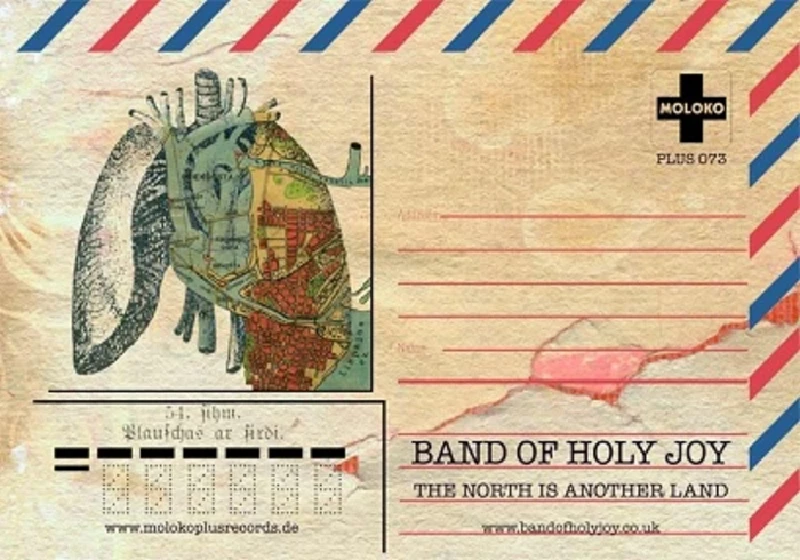
Visitor Comments:- |
| 569 Posted By: Myshkin, London on 19 Jul 2012 |
|
Ah, what an excellent piece on a long forgotten band and one that has (unfortunately) got lost in the mists of time. And admittedly one that I had just about forgotten too. Still, this article made me want to go and dig out their old albums. Lovely.
|
interviews |
|
Interview (2019) |
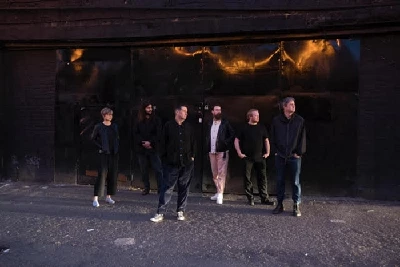
|
| In our fifth interview with them, John Clarkson talks to Johny Brown, Inga Tillere and James Stephen Finn from London-based alternative/indie rock band the Band of Holy Joy about their remarkable latest album, ‘Neon Primitives’. |
| Interview (2018) |
| Interview (2015) |
| Interview (2014) |
live reviews |
|
Tiger Lounge, Manchester, 27/9/2014 |

|
| Bill Seagrave watches the Band of Holy Joy play an atmospheric and inventive set at the Tiger Lounge in Manchester |
features |
|
(With Moon Under Water and Dream Maps), Water Rats, London, 17/1/2020 (2019) |
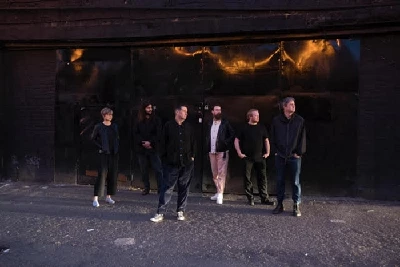
|
| We profile our next London Pennyblackmusic Bands' night which will take place with The Band of Holy Joy, Moon Under Water and Dream Maps at the Water Rats on the 17th January, 2020. |
| (With the Cathode Ray), Wee Red Bar, Edinburgh, 10/12/2017 (2017) |
| (With the Bitter Springs and Idiot Son), Macbeth, London, 9/1/2015 (2015) |
reviews |
|
Brutalism Begins at Home (2017) |
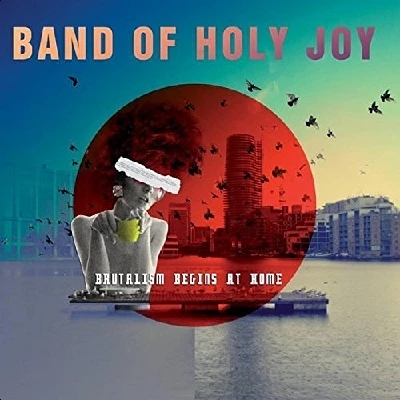
|
| Appealing new EP from London-based alternative rock the Band of Holy Joy which has been released on ten inch vinyl and digitally |
| A Plain Cookerybook for the Working Classes (2016) |
| An Atlas of Spatial Practice (2016) |
| Land of Holy Joy (2014) |
| A Place Called Home (2014) |
| City of Tales (Vol. 1 and 2) (2013) |
most viewed articles
current edition
Carl Ewens - David Bowie 1964 to 1982 On Track: Every Album, Every SongBathers - Photoscapes 1
Colin Blunstone - Thalia Hall, Chicago, 16/7/2025
Visor Fest - Valencia, Spain, 26/9/2025...27/9/2025
Billie Eilish - O2 Arena, London, 10/7/2025
Sir Tim Rice - Interview
Bathers - Photoscapes 2
John McKay - Interview
Editorial - July 2025
Armory Show - Interview with Richard Jobson
previous editions
Heavenly - P.U.N.K. Girl EPTrudie Myerscough-Harris - Interview
Pixies - Ten Songs That Made Me Love...
Beautiful South - Ten Songs That Made Me Love...
Oasis - Oasis, Earl's Court, London, 1995
Boomtown Rats - Ten Songs That Made Me Love....
Blues and Gospel Train - Manchester, 7th May 1964
Peter Paul and Mary - Interview with Peter Yarrow
Jimmy Nail - Interview
Fall - Hex Enduction Hour
most viewed reviews
current edition
Amy Macdonald - Is This What You've Been Waiting For?Sick Man of Europe - The Sick Man of Europe
Alice Cooper - The Revenge of Alice Cooper
Phew, Erika Kobayashi,, Dieter Moebius - Radium Girls
Lucy Spraggan - Other Sides of the Moon
Blueboy - 2
Cynthia Erivo - I Forgive You
Davey Woodward - Mumbo in the Jumbo
Lapsley - I'm a Hurricane, I'm a Woman In Love
Philip Jeays - Victoria
related articles |
|
Band of Holy Joy/Cathode Ray: Feature (2016 |
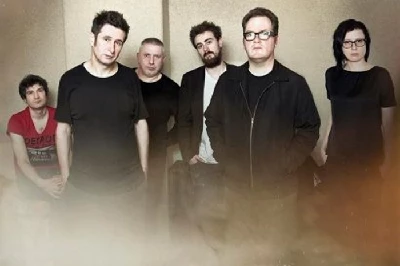
|
| Pennyblackmusic presents three acts from the Edinburgh-based label – The Band of Holy Joy, The Cathode Ray and Roy Moller – at the Sebright Arms on April 15th |
| Morton Valence: Interview (2014) |
Pennyblackmusic Regular Contributors
Adrian Janes
Amanda J. Window
Andrew Twambley
Anthony Dhanendran
Benjamin Howarth
Cila Warncke
Daniel Cressey
Darren Aston
Dastardly
Dave Goodwin
Denzil Watson
Dominic B. Simpson
Eoghan Lyng
Fiona Hutchings
Harry Sherriff
Helen Tipping
Jamie Rowland
John Clarkson
Julie Cruickshank
Kimberly Bright
Lisa Torem
Maarten Schiethart